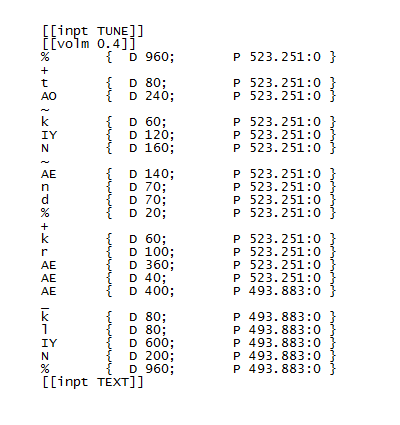The Couriers is a five-part a cappella setting of Sylvia Plath's short poem by the same name, and was originally intended for a human choir. However, after discovering the programming interface to the voice synthesizer built into Apple's OS-X operating system, I thought it would be an interesting experiment and a great test of the state-of-the-art (back in 2013) to try to synthesize all the parts instead.
The Apple Speech Synthesis API was still relatively primitive, and was, in any case, designed for speech synthesis, not the synthesis of the singing voice. In normal use, the programmer would hand the synthesizer a line of text—something like "Press the button to start"—which the synthesizer would then render as best it is able, without further guidance from the programmer. However, the synthesizer also supports an input mode called TUNE which allows the programmer to specify the duration and frequency of every portion of the text, including the duration of silences between words. The only caveat is that the text must be broken down and rewritten as a sequence of phonemes, since duration and frequency may only be specified on the phonemic level.
As one might imagine, the resulting script is cumbersome, arcane, and bears no resemblance to a musical score. The high-level symbolism and efficiency of musical notation are entirely lacking. This is the soprano part to the short fragment "talking and crackling," rewritten in Apple's ASCII phonetic symbols as "tAOkIYN AEnd krAEklIYN":

In this script, the percent sign is used to notate silence. The characters '+', '~', and '_' notate different levels of syllabic stress (similar to poetic scansion). Duration (D) is in milliseconds, and pitch (P) is in cycles per second (Hz). Volume changes are notated with the 'volm' directive. The Speech Synthesis API provides several different voices, but only a few of the voices work in TUNE mode. The voice "Junior" was found to have the best all-around characteristics for this realization.